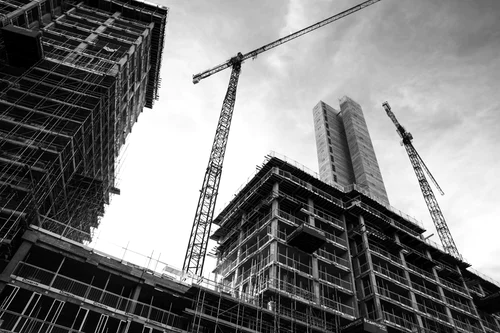
Architects and Engineers: How do we best collaborate? Whom needs what work to get done first? We both have extremely important functions in the design process, and it is in our clients’ best interest that we collaborate in the most effective way to deliver the best product possible. It is also important that both architects and engineers are focused on the project’s success.
Collaboration Best Practices
In my experience, successful collaboration between architects and engineers can occur with the following steps:
- Decide who is in charge of moving the project forward. Too many cooks in the kitchen creates chaos and confusion. Typically, the architect is the team lead but this can flip from time to time. It is important to establish one lead that organizes the team and reports to the client/owner, and the rest of the team must understand and appreciate this chain of command.
- The team lead needs to set clear expectations of the design team and consultants, including frequency of coordination meetings and a deliverable schedule.
- As structural engineers, we typically work under an architect. It is important for us to first establish design criteria such as design codes being used, dead and live load requirements, and framing systems. This can typically be conveyed in one single-page document – either as a narrative or through drawings – and typically takes less than 10 minutes to coordinate with the architect, but it sets the stage for the entire project and virtually every design decision we make moving forward.
- Prior to full-blown design, it is beneficial for both the architect and engineer to meet regarding best framing systems, preferred column locations, floor system depths, etc. An ounce of prevention saves a pound of cure.
- I’ve found it to be efficient to save questions and bring them up all together at a regularly scheduled meeting to discuss recent items that need to be resolved. Rather than sending each question as it comes up it is more efficient to discuss a group of items at one time. Coordination between the architect and engineer throughout the design phase is imperative. We cannot both be working in parallel yet independent silos. The project lead should develop a schedule for regular coordination meetings.
- Deliver on time! Everyone’s schedule is tied to the deliverable schedule that is set early on. This may change from time to time but each change to the schedule needs to be communicated to all team members as soon as possible. Everyone is planning based on this schedule, including the contractor that is likely securing subcontractors based on the design deliverable schedule. Unmet expectations are a quick way to establish a negative reputation and undermine a professional reception. This works both ways, engineers rely on receiving updated drawing sets and info from the architect team on time, and in return we must deliver our drawings and calculations on a set deadline. Communicating these dates and expectations from the start is imperative.
It is beneficial if both the engineer and the architect take the time to listen to the other and be empathetic to the design concerns that each must contend with. Even the most complex concepts and coordination efforts are successful only with great communication between all team members. Collaboration creates brilliant buildings that are simultaneously works of art and calculated masterpieces. Let’s start the conversation about design team partnerships so that we can enhance our deliverables for our clients. We all benefit from that.
Cheers to great spaces!

Vector Collaborative
kari@vector-collab.com
641.757.9653
vector-collab.com
Where art and science merge in the company of practical dreamers, that’s where you’ll find me. Structural engineer by profession. Entrepreneur, mom, Christian, STEM advocate, artist, yogi and equal rights voice because that’s what makes up my soul. With 18 years of commercial experience combined with an open minded quest to be creative, I thrive at collaboratively arriving at solutions that are cost effective, practical, innovative and technically sound. Fluent in steel, concrete masonry and timber design. Experienced in Revit, AutoCAD and Risa 3D. Proficient in seismic and wind design using ASCE 7. Voting member of the ASCE 7-22 Dead and Live Loads Subcommittee. Current Past President of the Iowa Section of the American Society of Civil Engineers. Energized by engineering, construction job sites, business and living as a fully integrated human being.

Leave a Reply